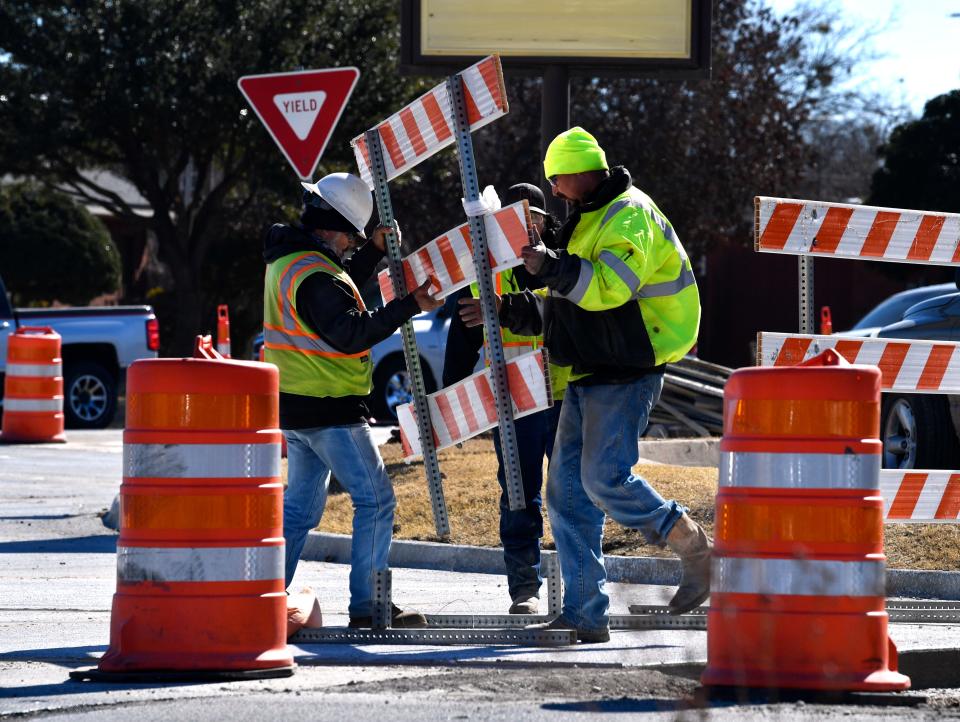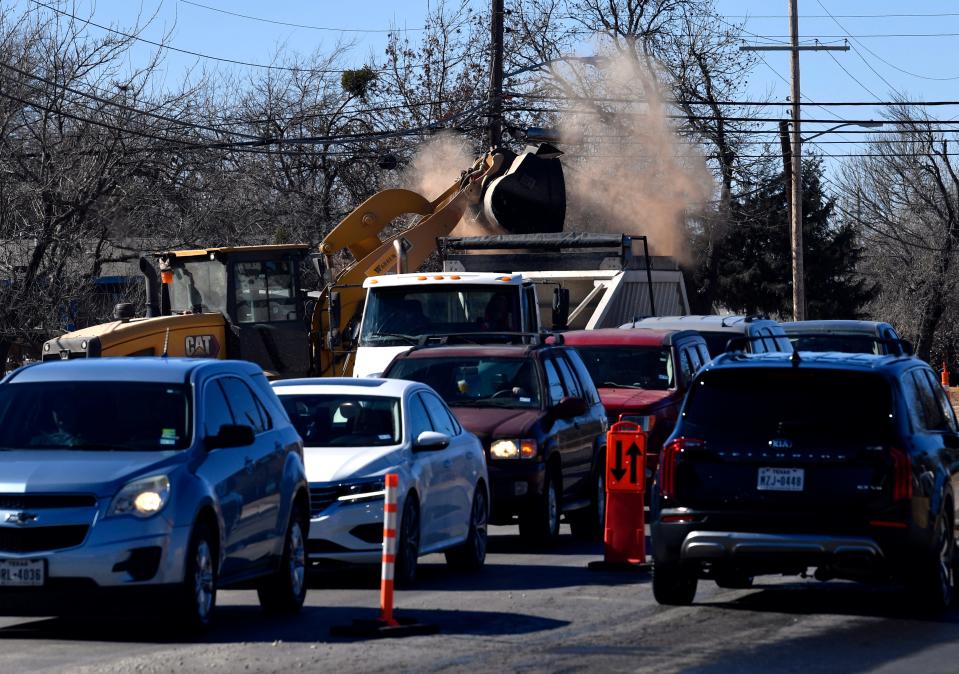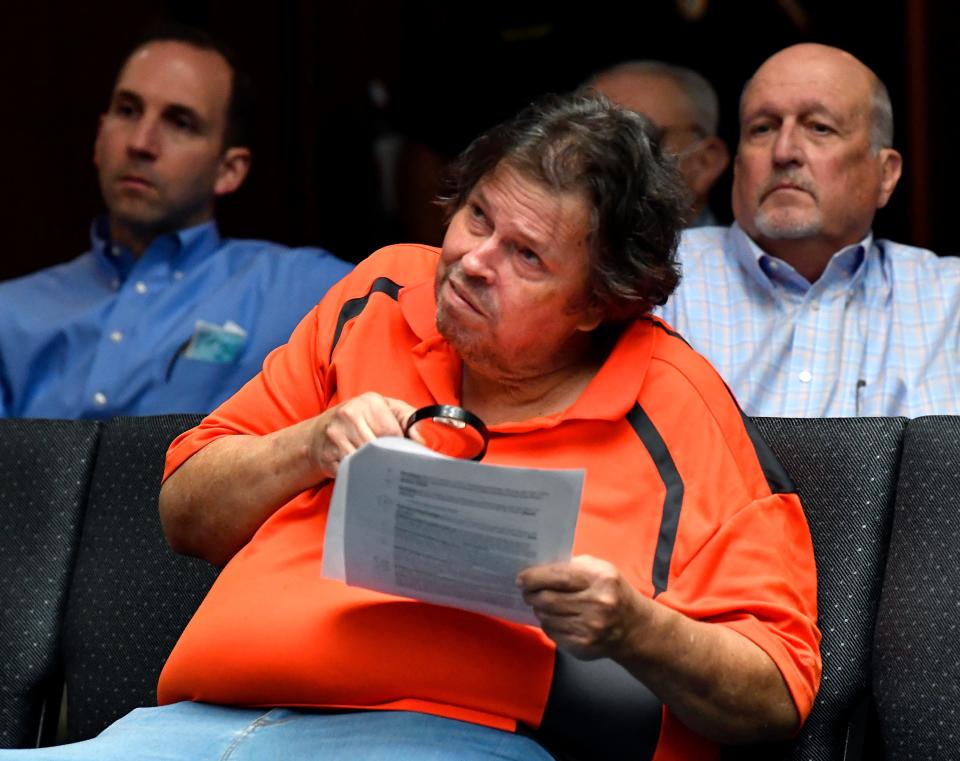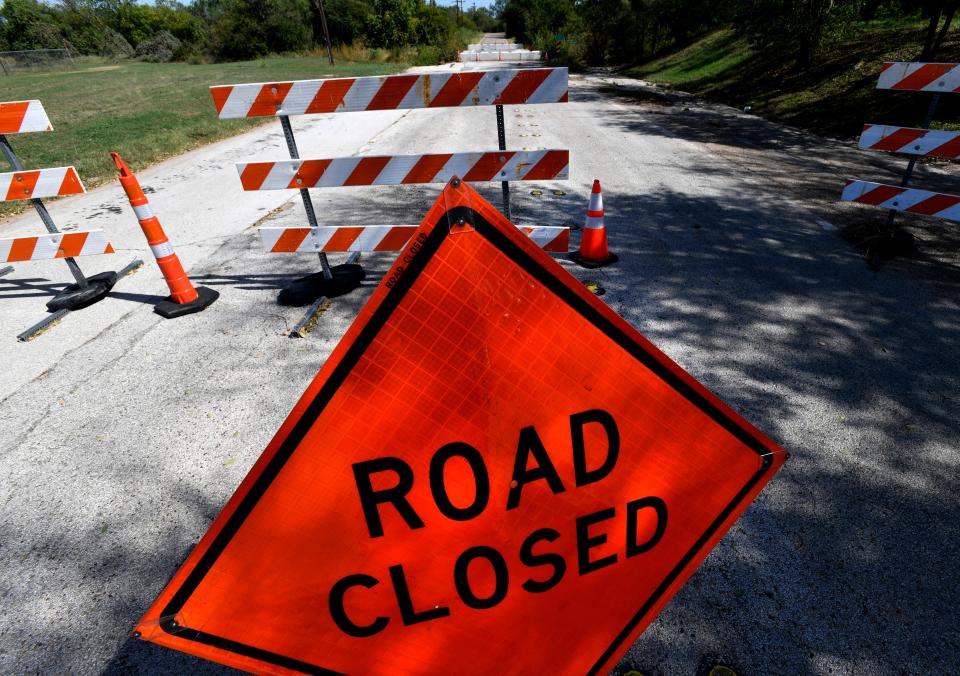Rocky roads: Officials, residents weigh in on Abilene's streets
News from an assessment of Abilene streets during Thursday's Abilene City Council meeting is, at first blush, discouraging.
The city's overall pavement condition index, an indication of the health of its various streets, was 50 —considered poor — in 2016. It's 46 now.

That's despite efforts, including a street maintenance fee for commercial and residential properties designed to help.
That likely isn't a surprise for drivers, traversing rough patches throughout the city, such South 27th Street from Buffalo Gap Road to Barrow Street. It's an area currently undergoing repavement and reconstruction.
Intersections in the area are being converted to concrete.
A look into the future shows that bond dollars — suggested increments begin around $50 million and go up to $100 million — are likely needed to make a difference, in addition to collecting around $2 million more to fund regular repairs.
But even with a 30% increase in regular maintenance dollars, plus a $100 million bond, the overall PCI of city streets isn't projected to hit a PCI of 70 or above, which is considered satisfactory.
Instead, it rises just enough to hit the bottom of the fair category, which begins at 55, topping off there around 2029 and then starting to fall slightly.
But if nothing new is done and the city maintains an annual street budget of $6.6 million, the overall PCI is projected to drops to 36, the "very poor" category.
City Manager Robert Hanna said some facts about streets can be lost in the report's myriad figures.
"Getting all of our streets to an 'A' cost $377 million dollars originally," he wrote in an email, referring to Fugro's estimate from 2016.
"Now, that number is $292 million, so we're making progress," he said. "Had we done nothing to change the course of action, we'd be in a far worse situation than we are now."
Every $1 spent on preservation stands to eliminate or delay spending $12-$20 in the future, Sirous Alavi with Fugro told the council Thursday.
The company that did the current street survey and the one in 2016.
More to know
Arterials and collector streets are holding steady for the most part, he said, the city pulling 6% out of the "failed" category compared to the original survey.
The biggest problem going forward, he said, is local roads, which make up the majority of streets and can drag down PCI scores.
The good thing about having a comprehensive study, Hanna said, is that you can "manage what you can measure."
Since 2015, the city has spent more than $100 million on arterials, collectors and local roads, of which the street maintenance fee has accounted for about 25%, he said.
The report shows progress, he said, but it also, bluntly, shows more money for streets is needed.
Planning ahead
The council did not implement a planned Fiscal Year 2020 increase to the street fee, which would have bumped it up by $2 for residential and $20 for commercial customers, he said, because of the ongoing pandemic.
"Even if we had, we still would need to identify additional dollars," Hanna said, adding the fee was never meant to be a "silver bullet."
"It was sold as one solution that, combined with others, can make a complete solution," Hanna said.

A combination of bond funds, a continuation of the fee and a "continued commitment to allocating funds to streets in excess of these two sources is how we are going to solve this problem," he said.
"I am confident we will find a way to continue to make improvements to our road network over the next five year period," Hanna said. "Then, we measure again and see if we need to adjust more."
Hanna said that while February's winter ice storm "for certain" caused road damage, it didn't slow road repair schedules overall.
Dissatisfaction on display

Individuals who commented on the report Thursday morning expressed disappointment.
"My grandpa, he worked in the city in the '60s and '70s in the street department," said David Swart. "He'd be really sad to see how we've decided to not do anything with our streets. It's like the Titanic."
Inflation and COVID-19, already have put many in a financial crunch, Swart said.
Charles Byrn, a candidate for council, said fee increases and a $100 million bond election isn't what taxpayers want.
Samuel Garcia and Cynthia Alvidrez, herself a former mayoral candidate, voiced similar concerns, telling the council they felt its spending priorities had gotten skewed.
"It's not just about this one issue," Garcia said, criticizing the way the city has spent economic development dollars to bring in what he sees as "average jobs," or focused on projects that failed — while also trying to get away from using funds for street maintenance, as it has recently.
He and Alvidrez also criticized use of city funds on projects such as the downtown hotel.
"It's like we're trying to buy our success and not working from the ground up," Garcia said. "And the ground is the most basic thing, the streets, the sewers, law enforcement, (the) fire department. Fix those before you come back and try to ask me for more."
Alvidrez said the city is regularly "pushing projects on taxpayers they can't afford," while not taking care of fundamentals — or things residents want and need, such as new equipment for parks.
Mayor's view
Mayor Anthony Williams, by contrast, believes residents should be "encouraged" by recent street maintenance efforts.
"We stopped the bleeding," Williams said Thursday night, while acknowledging recovery is still a long way off.
Serious conversations began being held about streets about six and a half years ago, he said, after fully 30 years of neglect.
"For almost three decades, we averaged about $500,000 or less a year for maintenance and relied on a cyclical rotation of bonds," he said, those used as catch-up measures.
Beginning with a 2015 bond, which allocated $46 million for street maintenance, the city built on that plan by implementing the street maintenance fee, he said.
Combined with efforts by the Texas Department of Transportation and the Metropolitan Planning Organization, $150 million quickly was invested in street repair, he said.
"It wasn't ever an expectation that in a few years we would undo the neglect of three decades," he said. " But a commitment was made and is being made."
Tough all over

Similar cities, such as Midland and Amarillo, have spent more than $100 million in bonds for street issues, leaving their roads "not necessarily in better shape than ours," Williams said.
"It is a phenomenon that is all over," he said.
But he said he feels there is a "way forward" for Abilene, and "we're at least going in that direction."
Other needs, such as new firehouses, an animal shelter, park maintenance and enhancement and other projects some have said might require bond dollars to fund should continue to be discussed, along with streets, he said.
But the city should not move too quickly in its plans, Williams said, engaging the community, then putting forward a recommendation "we think continues to move the needle."
Brian Bethel covers city and county government and general news for the Abilene Reporter-News. If you appreciate locally driven news, you can support local journalists with a digital subscription to ReporterNews.com.
This article originally appeared on Abilene Reporter-News: Rocky roads: Officials, residents weigh in on Abilene's streets

